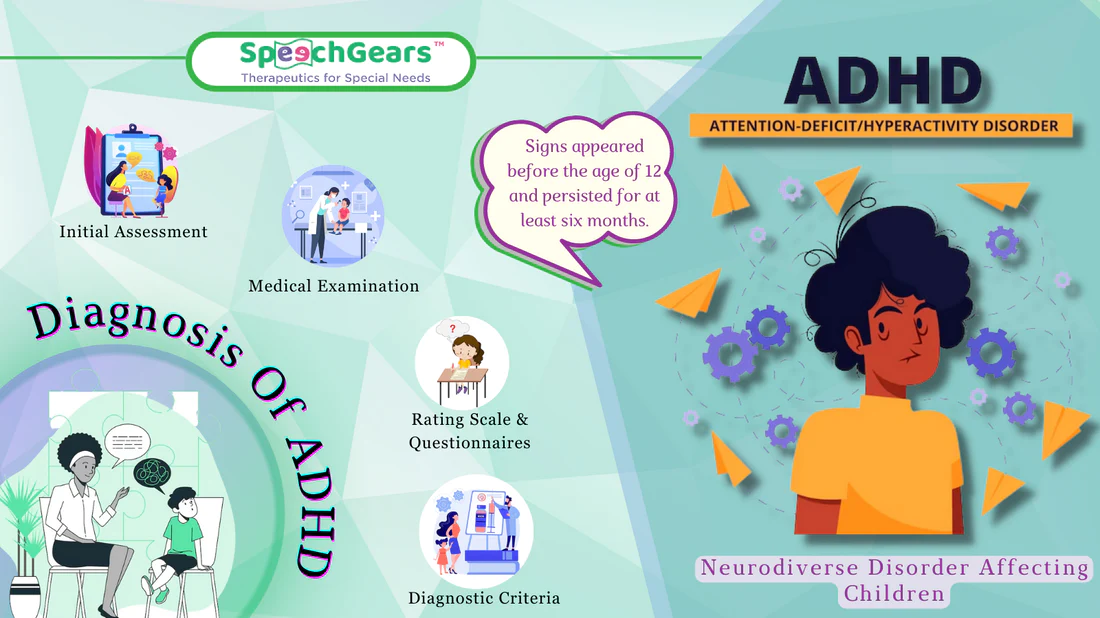Attention-Deficit/Hyperactivity Disorder (ADHD) is a neurodevelopmental disorder that affects millions of children and adults worldwide. Its impact extends beyond the individual, significantly influencing their families, schools, and workplaces. Characterized by inattention, impulsivity, and hyperactivity, ADHD poses challenges in various spheres of life, requiring a comprehensive understanding and appropriate management strategies.
Understanding ADHD
What is ADHD?
ADHD is a complex neurodevelopmental disorder that typically manifests in childhood and can persist into adulthood. Its core symptoms include inattention, hyperactivity, and impulsivity, which can vary in intensity and presentation among individuals.
Symptoms of ADHD
Inattention
One of the primary symptoms of ADHD is inattention. Individuals might struggle to focus on tasks, become easily distracted, overlook details, and have difficulty sustaining attention, especially in tasks that require prolonged mental effort.
Hyperactivity
Hyperactivity in ADHD refers to excessive and often uncontrollable physical movements. Children may appear restless, fidgety, and unable to stay seated in situations where remaining still is expected.
Impulsivity
Impulsivity involves acting without thinking about the consequences. Individuals with ADHD may have trouble controlling their impulses, resulting in interrupting conversations, taking risks without considering outcomes, and having difficulty waiting for their turn.
Types of ADHD
ADHD is categorized into three subtypes:
- Predominantly Inattentive Presentation: Primarily characterized by inattention without significant hyperactive-impulsive behavior.
- Predominantly Hyperactive-Impulsive Presentation: Mainly characterized by hyperactivity-impulsivity without significant inattention.
- Combined Presentation: Features both inattention and hyperactive-impulsive symptoms.
Diagnosing ADHD
Diagnostic Criteria
Diagnosing ADHD involves evaluating an individual’s symptoms, considering their developmental history, and ruling out other possible causes. The Diagnostic and Statistical Manual of Mental Disorders (DSM-5) outlines specific criteria for diagnosing ADHD.
Assessment Process
ADHD diagnosis typically involves gathering information from multiple sources, including parents, teachers, and mental health professionals. A comprehensive evaluation helps in understanding the individual’s symptoms across various settings.
Challenges in Diagnosis
Diagnosing ADHD can be challenging due to overlapping symptoms with other conditions like anxiety, learning disabilities, or mood disorders. Additionally, cultural differences and individual variations in symptom presentation add complexity to the diagnostic process.
Managing ADHD
Treatment Approaches
Behavioral Therapy
Behavioral therapy helps individuals develop coping strategies, organizational skills, and better impulse control. It aims to modify behaviors and reinforce positive actions.
Medication
Stimulant medications, such as methylphenidate and amphetamines, are commonly prescribed to manage ADHD symptoms. Non-stimulant medications like atomoxetine may also be recommended.
Lifestyle Modifications
Implementing structured routines, adequate sleep, regular exercise, and a balanced diet can significantly impact symptom management in individuals with ADHD.
Support Networks
Building a strong support system, including family, educators, and mental health professionals, is crucial in effectively managing ADHD. Support groups and counseling can provide guidance and emotional support.
ADHD and Daily Life
Impact on Education
ADHD often affects academic performance due to difficulties in focusing, staying organized, and completing tasks. Specialized educational interventions and accommodations can help students succeed in school.
Relationships and Social Interactions
Managing relationships can be challenging for individuals with Attention-Deficit/Hyperactivity Disorder ADHD due to impulsivity and inattention. Educating friends and family members about the disorder can foster understanding and supportive relationships.
Professional Life
In the workplace, ADHD might present challenges in time management, organization, and maintaining focus. Strategies like breaking tasks into smaller steps and using organizational tools can improve productivity.
Conclusion
Understanding ADHD is crucial in providing adequate support and resources for individuals living with this condition. While ADHD poses challenges, early diagnosis, comprehensive treatment approaches, and a supportive environment can significantly improve the quality of life for those affected. By raising awareness and fostering a compassionate and inclusive society, we can create a more accommodating environment for individuals with ADHD to thrive and reach their full potential.

